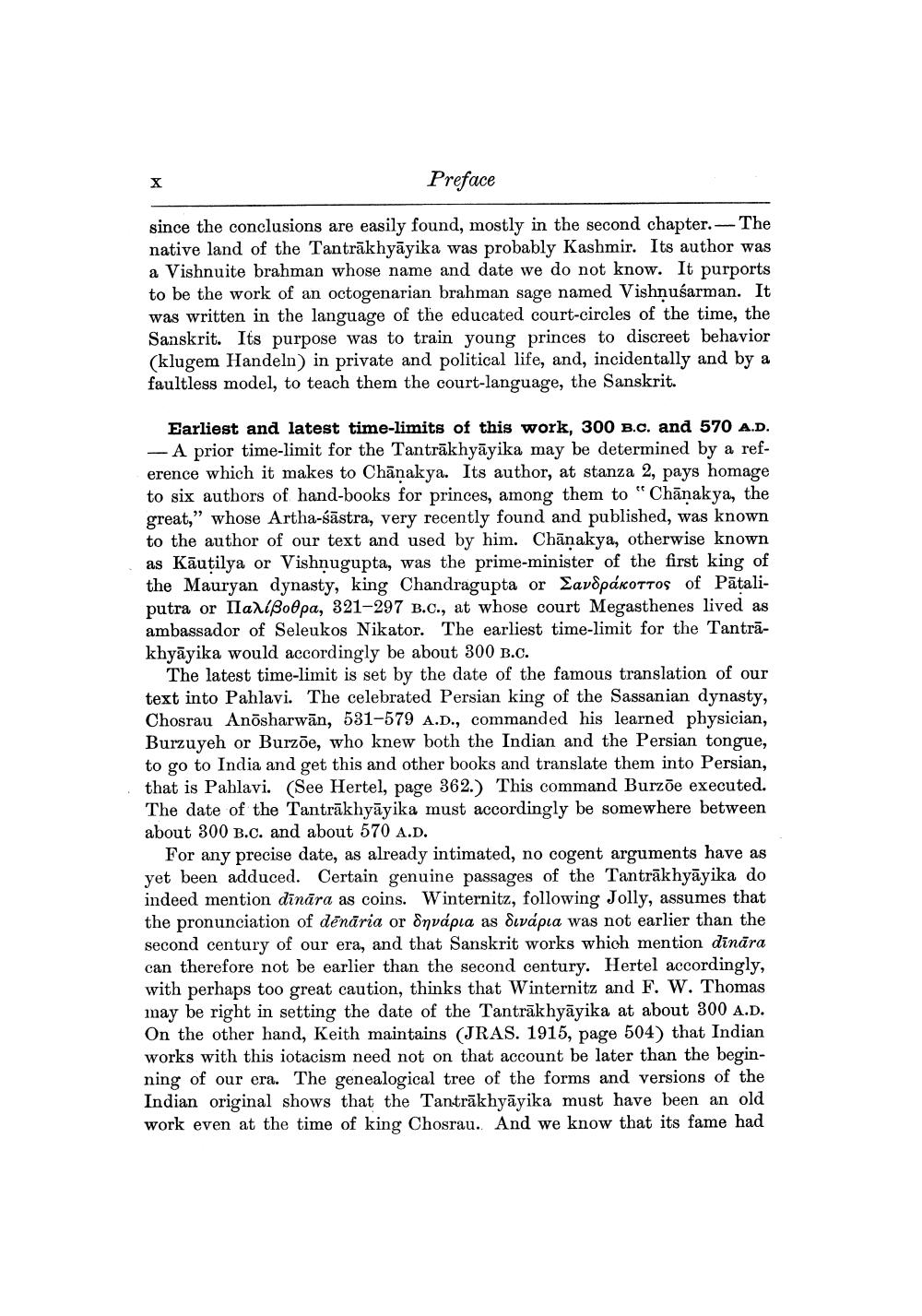________________
Preface
since the conclusions are easily found, mostly in the second chapter. - The native land of the Tantrākhyāyika was probably Kashmir. Its author was a Vishnuite brahman whose name and date we do not know. It purports to be the work of an octogenarian brahman sage named Vishnušarman. It was written in the language of the educated court-circles of the time, the Sanskrit. Its purpose was to train young princes to discreet behavior (klugem Handeln) in private and political life, and, incidentally and by a faultless model, to teach them the court-language, the Sanskrit.
Earliest and latest time-limits of this work, 300 B.C. and 570 A.D. - A prior time-limit for the Tantrākhyāyika may be determined by a reference which it makes to Chāṇakya. Its author, at stanza 2, pays homage to six authors of hand-books for princes, among them to "Chānakya, the great,” whose Artha-śāstra, very recently found and published, was known to the author of our text and used by him. Chanakya, otherwise known as Kāutilya or Vishnugupta, was the prime-minister of the first king of the Mauryan dynasty, king Chandragupta or Eavepakottos of Pātaliputra or IlarißoOpa, 321-297 B.C., at whose court Megasthenes lived as ambassador of Seleukos Nikator. The earliest time-limit for the Tantrākhyāyika would accordingly be about 300 B.C.
The latest time-limit is set by the date of the famous translation of our text into Pahlavi. The celebrated Persian king of the Sassanian dynasty, Chosrau Anōsharwān, 531-579 A.D., commanded his learned physician, Burzuyeh or Burzõe, who knew both the Indian and the Persian tongue, to go to India and get this and other books and translate them into Persian, that is Pahlavi. (See Hertel, page 362.) This command Burzõe executed. The date of the Tantrākhyāyika must accordingly be somewhere between about 300 B.C. and about 570 A.D.
For any precise date, as already intimated, no cogent arguments have as yet been adduced. Certain genuine passages of the Tantrākhyāyika do indeed mention dināra as coins. Winternitz, following Jolly, assumes that the pronunciation of dendria or δηνάρια as δινάρια was not earlier than the second century of our era, and that Sanskrit works which mention dināra can therefore not be earlier than the second century. Hertel accordingly, with perhaps too great caution, thinks that Winternitz and F. W. Thomas may be right in setting the date of the Tantrākhyāyika at about 300 A.D. On the other hand, Keith maintains (JRAS. 1915, page 504) that Indian works with this iotacism need not on that account be later than the beginning of our era. The genealogical tree of the forms and versions of the Indian original shows that the Tantrākhyāyika must have been an old work even at the time of king Chosrau. And we know that its fame had




